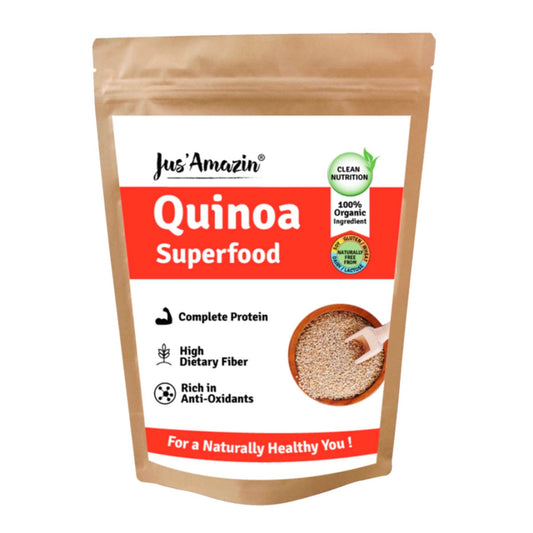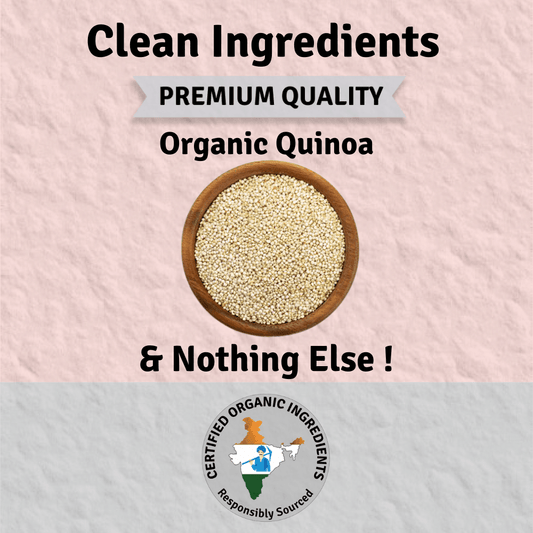Quinoa is a versatile and nutritious pseudo-grain that has gained popularity in recent years due to its numerous health benefits and culinary versatility. Although often referred to as a grain, quinoa is technically a pseudo-grain because it is not a member of the grass family like wheat or rice. It is native to the Andean region of South America and has been cultivated for thousands of years by indigenous peoples. Nutrition: Quinoa is a nutritional powerhouse. It is a complete protein, containing all nine essential amino acids, making it an excellent plant-based protein source for vegetarians and vegans. Additionally, quinoa is rich in dietary fiber, which aids in digestion and helps maintain a healthy digestive system. It is also a good source of minerals such as magnesium, iron, and phosphorus, as well as vitamins B and E. Why is it called a pseudo-grain? Quinoa is called a pseudo-grain because it is technically not a true grain. Whole grains like wheat, rice, and corn come from grass plants, quinoa comes from a plant species called Chenopodium quinoa. Despite not being a member of the grass family, quinoa's edible seeds are used similarly to traditional grains, hence the term "pseudo grain." Millet vs. Quinoa: Millet and quinoa are both nutritious grains that offer unique characteristics. Millet is a small-seeded grain that is highly versatile and can be used in various dishes, similar to quinoa. However, unlike quinoa, millet is not a complete protein and lacks certain essential amino acids. Quinoa, on the other hand, provides a complete protein profile and has a slightly nutty flavor, making it a popular choice for health-conscious individuals. Health Benefits: Quinoa offers numerous health benefits. Its high protein content makes it a valuable addition to vegetarian and vegan diets, aiding in muscle repair and growth. The fiber in quinoa supports healthy digestion and may help reduce the risk of constipation. Quinoa is also naturally gluten-free, making it a suitable alternative for individuals with gluten sensitivities or celiac disease. Moreover, the antioxidants present in quinoa may help protect against chronic diseases and inflammation. Recipes: Quinoa can be used in a variety of delicious recipes. Here are a few examples: Quinoa Salad: Combine cooked quinoa with diced vegetables, such as cucumber, bell peppers, and cherry tomatoes. Add fresh herbs, olive oil, lemon juice, and salt for a refreshing and nutritious salad. Quinoa Stir-Fry: Sauté cooked quinoa with your favorite vegetables, such as broccoli, carrots, and snow peas. Add soy sauce, garlic, and ginger for a flavorful and quick stir-fry. Quinoa Porridge: Cook quinoa with milk or plant-based milk, cinnamon, and a sweetener of your choice for hearty and nourishing breakfast porridge. Mini Collection White Quinoa: White quinoa is the most common variety of quinoa. It has a mild, nutty flavor and a light texture when cooked. It is versatile and can be used in salads, stir-fries, or as a side dish. It is a great source of protein, fiber, and essential nutrients. Red Quinoa: Red quinoa has a richer, earthier flavor compared to white quinoa. It retains its shape better when cooked, making it ideal for salads and pilafs. Like white quinoa, it is packed with protein, fiber, and nutrients, making it a nutritious and delicious addition to your meals. Quinoa Flour: Quinoa flour is made by grinding quinoa seeds into a fine powder. It is a gluten-free alternative to wheat flour and has a slightly nutty taste. Quinoa flour is versatile and can be used in baking recipes like bread, pancakes, and cookies, adding a nutritional boost to your favorite treats.




